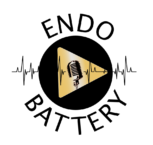
Send us a text with a question or thought on this episode ( We cannot replay from this link)
Dr. Abhishek Mangeshikar shares critical insights on evaluating surgeon skill and the importance of comprehensive treatment for endometriosis. His expertise reveals that clean, meticulous surgical technique with respect for tissue significantly improves outcomes and reduces post-operative adhesions.
• Red flag if surgeon plans to “just remove the cyst” in a quick procedure
• Endometriosis cysts never exist as single entities—always accompanied by other disease
• Proper imaging should identify connections to surrounding structures
• Wait at least six months for post-operative imaging due to healing processes
• Original surgeon should review follow-up imaging to distinguish between fibrosis and disease
• Clean surgical technique with minimal bleeding significantly reduces adhesion formation
• “Tissue respect” approach leads to better outcomes than aggressive dissection
• Different bodies heal differently, affecting individual adhesion formation
Got a question? Send it in using the link in the episode description, email contact@endobattery.com, or visit the endobattery.com contact page.
Website endobattery.com
0:00
Life moves fast and so should the answers to your biggest questions. Welcome to EndoBattery's Quick Connect, your direct line to expert insights Short, powerful and right to the point. You send in the questions, I bring in the experts and in just five minutes you get the knowledge you need. No long episodes, no extra time needed, and just remember expert opinions shared here are for general information and not for personalized medical advice. Always consult your provider for your case-specific guidance. Got a question? Send it in and let's quickly get you the answers. I'm your host, alana, and it's time to connect.
Speaker 1:
0:42
Today we're honored to have Dr Abhishek Mingashikar join us. Dr Ming is a leading endometriosis specialist and minimally invasive gynecological surgeon known for his groundbreaking work at Indian Center for Endometriosis in Mumbai. With expertise in advanced laparoscopic and robotic surgeries, he's dedicated to improving care for those battling this complex disease. Let's dive in and get answers to the questions that matter most to you. How much can post-operative imaging reveal about a surgeon's skill? Like, for instance, if images appear clean with minimal blood? Does this indicate more of a meticulous surgery? Or rather, should they focus solely on the immediate post-op imaging? Should patients prioritize comprehensive preoperative imaging and a surgeon's thorough approach to excision, or what role does the post-operative follow-up imaging play in assessing outcomes, and how does timing impact its accuracy?
Speaker 2:
1:39
So there's a couple of things that this is a very good question brings up a couple of important points of things. That this is a very good question brings up a couple of important points. So one is before surgery, if your provider is telling you I'm just going to go in and take the cyst, I'll be in and out in half an hour, big red flag. So an endometriosis cyst never exists as a single entity. So there's always accompanying deep or peritoneal disease along with a cyst. So if somebody is just planning to remove the cyst, you're in trouble. The imaging is also quite incomplete if the report of the ultrasound or the MRI comes back just describing a cyst. So if they've not picked up that it's stuck to say the pelvic side wall or the back of the uterus or the uterus sacral ligament, that's incomplete imaging. So they need to do a better level of ultrasound or MRI. Then the next point is if you should repeat imaging immediately after surgery. I don't think it's a good idea to do so immediately because you have a lot of in the immediate post-op period. There's a lot going on, and even in the late post-op period, for at least a going on, and even in the late post-op period for at least a couple of months. There's a lot of healing, fibrosis, whatnot going on inside. That can confuse some of the findings. I don't repeat imaging, at least for six months or so, when they see me at follow-up in general, and I also ask them to track symptoms during that kind of recuperative period. So usually at the end of that period when you do your scan it's very important to assess what was there before versus what's there now. Yes, some healing can occur by fibrosis. So it's very important for me as the surgeon to do the imaging myself or at least read the MRI myself or do the ultrasound myself. So I know the areas that I've excised and if I find fibrosis in an area, I know that, okay, I've already excised that part and yes, there can be some healing by fibrosis there. It's not really the disease that was left behind or a disease that has grown back or something like that.
Speaker 2:
3:39
So you were saying about adhesion prevention. So there's a lot of talk about that in surgery in general. But endometriosis is known for adhesions and you know very distorted anatomy. So I think one of the main features of adhesion prevention is how clean the surgeon is. So I was discussing this with Shanti Bowling a few days ago. So we were like we both operate very similarly. So we're very clean, we're very meticulous with catching even like the tiniest bleeders, and I think that plays a big role not in just the efficiency of your surgery but also minimizing adhesions, because the less blood and oozing you have in your surgical field, the less adhesions you're going to form.
Speaker 2:
4:25
And also this comes about by just dissecting gently in anatomical spaces. You know having a lot of tissue respect. I watch a lot of surgery in general because I have no life other than that, and I see some cases. You know where the surgeons look like they're just angry with the tissue and you know tearing it apart, trying to get space in between them. But you have to kind of. One of the important lessons you learn as a surgeon is like you have to have tissue respect. If you're kinder to it it's going to kind of show you the way forward and I think those are very important roles in preventing adhesions. Of course it's very individualistic, so everybody heals differently. So that also depends on the body's tissue processes and reactions to insults of surgery. So those are the main things and then of course you have industry driven lesion prevention barriers, which, you know, nobody knows how it works, nobody knows what doesn't. We just try them and see.
Speaker 3:
5:25
Yeah, and definitely different surgeons have different approaches with that and like what they like and you know that's individualized, which is important to talk to your surgeon if it's important to you I mean if that makes you feel more confident in your surgery and talking to them, it's important to be on the same page.
Speaker 1:
5:44
This Quick Connect. I hope today's insights helped you move forward with more clarity and confidence. Do you have more questions? Keep them coming, Send them in and I'll bring you the expert answers. And I'll bring you the expert answers. You can send them in by using the link in the top of the description of this podcast episode or by emailing contact at endobatterycom or visiting the endobatterycom contact page. Until next time, keep feeling empowered through knowledge.
